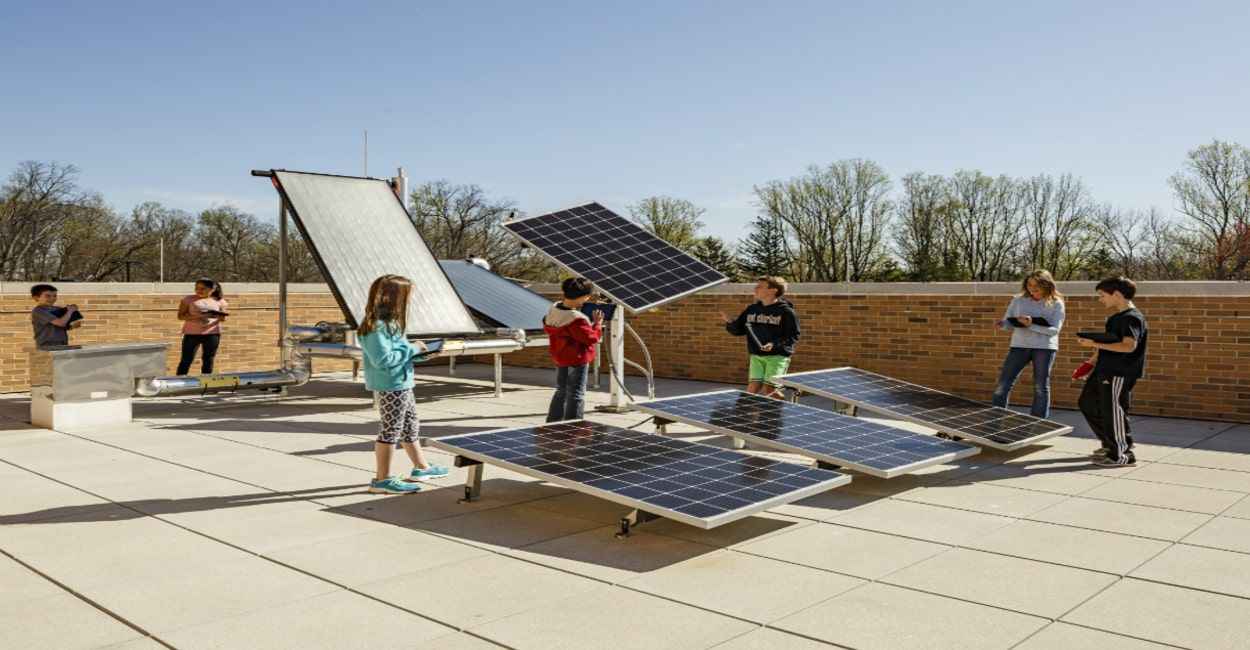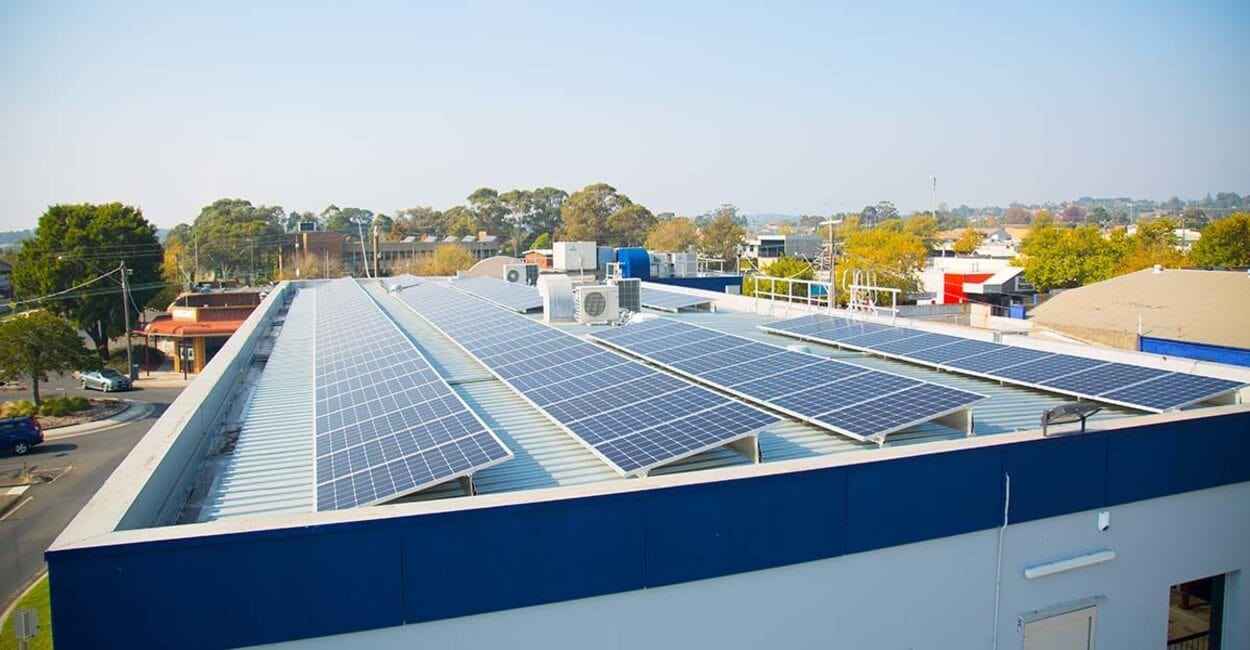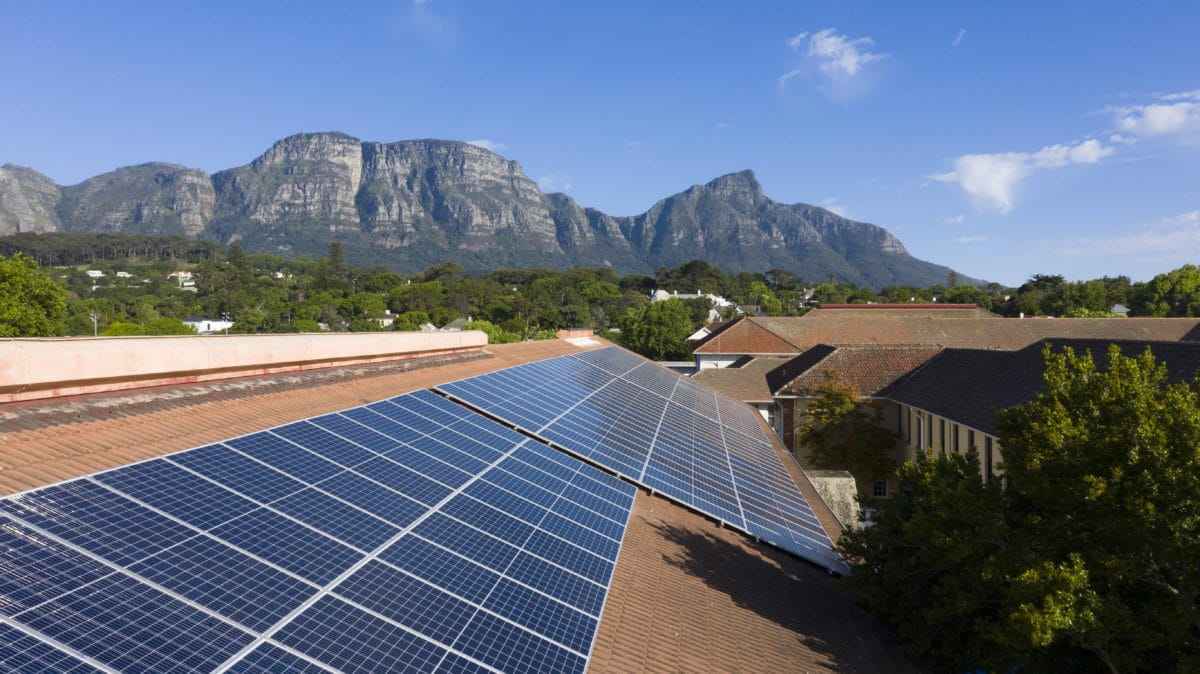Solar Energy For Schools: A Guide For Administrators And Educators

Solar energy is becoming an increasingly popular and affordable option for schools looking to reduce their energy costs and carbon footprint while providing a unique learning opportunity for students. If you are an administrator or educator interested in implementing solar energy in your school, here's a guide to help you get started:
Conduct an energy audit: Before considering solar energy, it's important to understand how much energy your school currently uses and where that energy is being consumed. Hire an energy auditor to identify areas where energy efficiency can be improved, which can help reduce overall energy costs and maximize the benefits of solar energy.
Assess your school's solar potential: Determine how much solar energy your school can generate by evaluating factors such as location, available roof space, and shading from nearby buildings and trees. This information can help you determine the size and placement of your solar panel system.
Choose a solar provider: Consider working with a reputable solar provider who can assist you with the design, installation, and maintenance of your solar panel system. Look for providers who have experience working with schools, and who can offer a warranty and ongoing support.
Secure funding: Solar panel systems can be expensive, so you'll need to secure funding before moving forward. Explore available grants and financing options, and consider partnering with local organizations or businesses to help fund the project.
Educate your students: Solar energy provides a great opportunity for students to learn about renewable energy and sustainability. Consider integrating solar energy into your curriculum, and use your solar panel system as a teaching tool. You can also involve students in the planning and implementation of the project to help them develop hands-on skills and knowledge.
Monitor and maintain your system: Once your solar panel system is installed, it's important to monitor and maintain it to ensure it's operating efficiently. Work with your solar provider to set up a monitoring system, and schedule regular maintenance to keep your system running smoothly.
By implementing solar energy in your school, you can not only reduce your energy costs and carbon footprint but also provide a unique learning opportunity for your students. With careful planning and support from a reputable solar provider, your school can make the switch to solar energy and reap the many benefits it has to offer.
Solar Energy Solutions For Schools
As the world becomes more environmentally conscious, solar energy is becoming an increasingly popular source of renewable energy. Schools are no exception, as they can benefit greatly from solar energy solutions in terms of cost savings and environmental impact.
There are several solar energy solutions that schools can adopt to harness the power of the sun. One of the most common solutions is to install solar panels on the roofs of school buildings. These panels convert sunlight into electricity, which can be used to power lights, computers, and other electronic devices.
In addition to installing solar panels, schools can also use solar water heaters to heat water for the school's facilities. Solar water heaters use the sun's energy to heat water, which can then be used for various purposes, including heating the school building.
Another solution is to use solar-powered outdoor lighting to illuminate the school's campus. Solar-powered lights use the sun's energy to charge batteries, which then power the lights at night.
When considering solar energy solutions for schools, it's important to keep in mind that installation costs can be high. However, these costs can be offset by the long-term cost savings of using solar energy, as well as the positive impact on the environment.
The Future Of Green Energy In Education
Green energy has become increasingly important in recent years as we strive to reduce our carbon footprint and transition to more sustainable energy sources. The education sector is no exception, as educational institutions have a significant role to play in the transition to a greener future.
The future of green energy in education looks promising, with a growing number of educational institutions adopting sustainable energy practices. Some of the key trends that are likely to shape the future of green energy in education include:
Solar Energy: Solar energy is likely to play a significant role in the future of green energy in education. Solar panels can be installed on the roofs of educational institutions to generate electricity, which can help reduce the institution's carbon footprint and save money on energy costs.
Energy Efficiency: Educational institutions are also likely to focus on energy efficiency in the future. This may include the installation of energy-efficient lighting, HVAC systems, and appliances, as well as the implementation of energy-saving practices.
Green Building Design: Green building design is another trend that is likely to shape the future of green energy in education. Educational institutions may adopt green building practices, such as the use of sustainable materials and the implementation of passive heating and cooling strategies.
Curriculum Integration: The integration of green energy and sustainability into the curriculum is also likely to become more common in the future. Educational institutions may offer courses in sustainability and green energy, as well as opportunities for students to participate in sustainability-related research projects.
Overall, the future of green energy in education looks promising, with more educational institutions adopting sustainable energy practices and integrating green energy and sustainability into the curriculum. As we move towards a greener future, the education sector will have an important role to play in shaping the next generation of environmental leaders.

The Role Of Solar Energy In Modernizing School Infrastructure
Solar energy has the potential to play a significant role in modernizing school infrastructure. As educational institutions strive to become more sustainable, solar energy offers a renewable and cost-effective solution to power school facilities.
One of the primary ways in which solar energy can modernize school infrastructure is through the installation of solar panels on school buildings. Solar panels can be installed on rooftops, parking lots, and other open areas to generate electricity. This electricity can then be used to power the school's lighting, computers, and other electronic devices. The use of solar energy can reduce the school's reliance on traditional energy sources, which can be expensive and have a negative impact on the environment.
In addition to reducing energy costs, the use of solar energy can also improve the resiliency of school infrastructure. In the event of power outages or natural disasters, solar energy can provide a reliable source of electricity, helping to keep critical facilities up and running.
Another way in which solar energy can modernize school infrastructure is through the implementation of solar-powered water heaters. Solar water heaters use the sun's energy to heat water, which can then be used for various purposes, including heating the school building. This can reduce the school's reliance on traditional heating methods, which can be costly and have a negative impact on the environment.
Finally, solar energy can also be used to power outdoor lighting on school campuses. Solar-powered lights use the sun's energy to charge batteries, which can then be used to power the lights at night. This can help reduce energy costs and improve campus safety.
Solar energy has many benefits for schools and students. Here are some of the key benefits of solar energy for schools:
Cost Savings: One of the biggest benefits of solar energy for schools is cost savings. Solar panels can generate electricity that can be used to power school facilities, reducing the school's reliance on traditional energy sources and lowering energy costs.
Environmental Benefits: Solar energy is a clean and renewable source of energy that produces no greenhouse gas emissions. By using solar energy, schools can reduce their carbon footprint and help mitigate the effects of climate change.
Educational Opportunities: Solar energy can provide unique educational opportunities for students. Schools can use solar panels as a teaching tool to educate students about renewable energy and sustainability.

Resiliency: Solar energy can help make schools more resilient in the face of power outages and natural disasters. Schools with solar panels can continue to operate critical facilities even when the power grid is down.
Community Engagement: Solar energy can also be used as a way to engage with the local community. Schools can use solar installations as a way to raise awareness about renewable energy and sustainability and involve the community in efforts to reduce the school's carbon footprint.
In addition to these benefits for schools, solar energy also has many benefits for students, including:
Exposure to Renewable Energy: By using solar energy, students are exposed to renewable energy technologies and can learn about the benefits of clean energy.
Real-World Applications: Solar energy is a tangible way for students to see how science, technology, engineering, and math (STEM) concepts are applied in the real world.
Critical Thinking and Problem-Solving: By studying solar energy, students can develop critical thinking and problem-solving skills as they explore the science and engineering behind renewable energy technologies.
Career Opportunities: As the demand for renewable energy continues to grow, students with knowledge and skills in solar energy can pursue careers in the field.
Bottom Line
In conclusion, solar energy has many benefits for schools and students. From cost savings and environmental benefits to educational opportunities and community engagement, solar energy is a valuable tool for schools looking to become more sustainable and provide students with hands-on learning experiences.

